Blue Mountains Everlastings, Field Pussytoes, Field Pussy-toes, Northern Pussytoes
Antennaria howellii ssp. neodioica
Synonyms: Antennaria neglecta var. attenuata, Antennaria neglecta var. neodioica
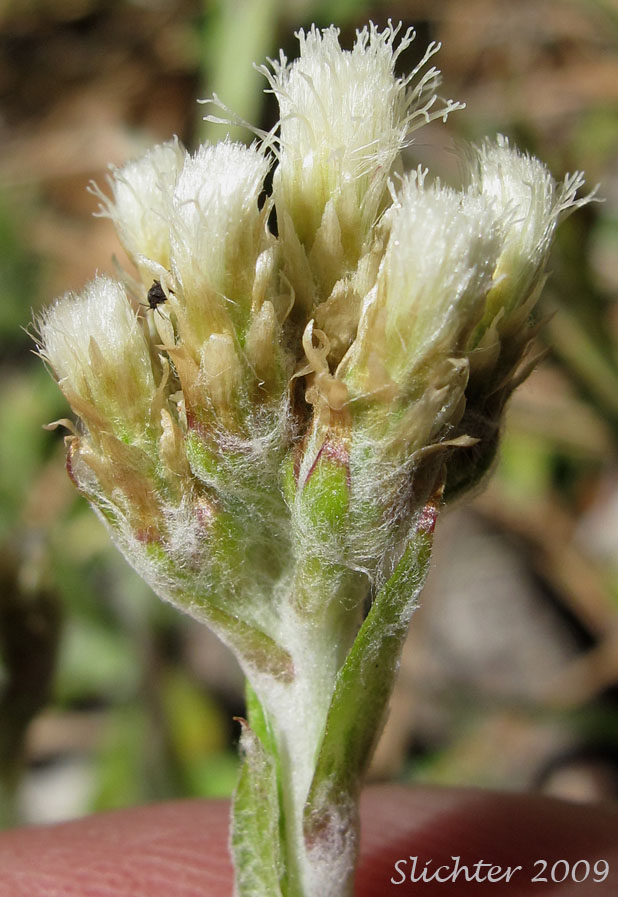
Close-up of the inflorescence of field pussytoes as seen along Canyon Creek in the Klickitat State Wildlife Area of south-central Washington.......May 8, 2009. Note that the inflorescence is not truely racemose with the flower heads spaced out along the upper part of the stem, so this is not racemose pussytoes (Antennaria racemosa).
Characteristics:
Field pusy-toes are perennial wildflowers with floral scapes
arising 20-30 cm high from leafy stolons of the previous year's growth. The
stems are loosely covered with matted to tufted hairs. The basal leaves are
ovate, obovate, or oblanceolate in outline, measuring 3-6 cm long. The lower
surface is densely covered with white, matted hairs and the upper surface either
entirely glabrous or with at least a few long hairs when young, depending on
the variety (See varieties below.). The leaves of the stem are much narrower.
The inflorescence is fairly open and consists of several to over
a dozen narrow flower heads. The involucres are 8-9 mm high with the ouer bracts
lossely covered with woolly hairs, the innermost or upper bracts are glabrous.
The lower bracts are tinged with brown or red near the base while the uppermost
are whitish. The flowers are imperfect, with the staminate and
pistillate flowers found on separate plants
Varieties of Howell's Pussytoes:
var. howellii - Upper surface of the leaf blades
always green and lacking hairs, even when young.
var. neodioica (formerly var. attenuata) -
Upper surface of the leaf blades initially sparsely long-hairy when young, later
becoming completely glabrous with age.
Habitat:
Field pusstyoes may be found on sunny , rocky
slopes and road cuts in forest openings.
Range:
Field pussytoes may be found from the Yukon
east to Newfoundland and south to California and east to Virginia and Arizona.
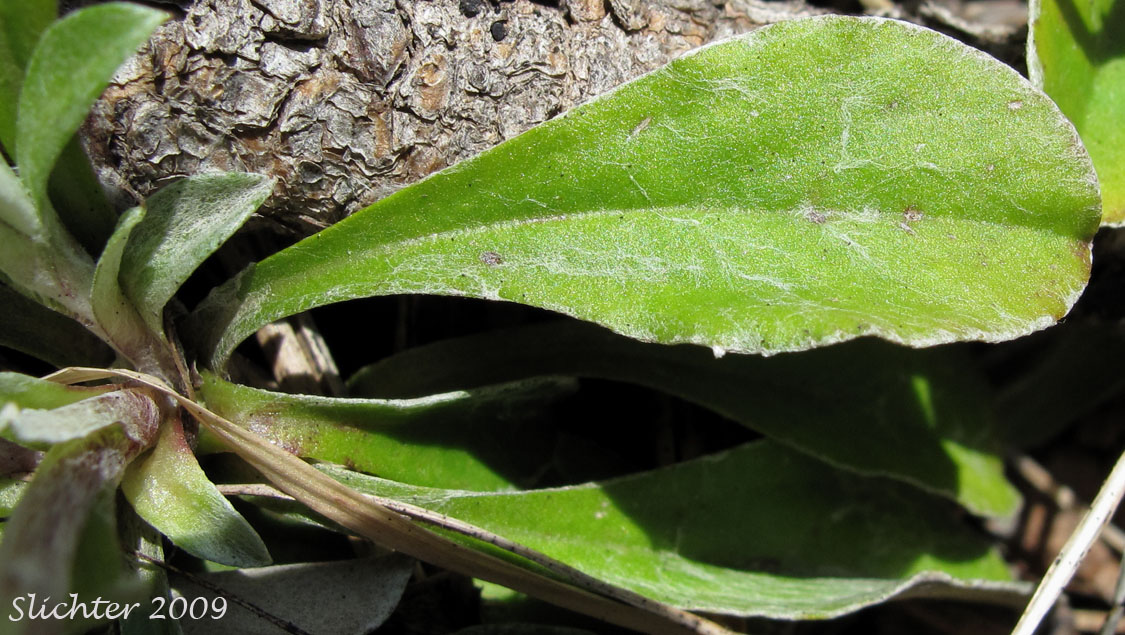
Close-up of the basal leaves of field pussytoes as seen along Canyon Creek in the Klickitat State Wildlife Area of south-central Washington........May 8, 2009. Note that there is a residue of matted white hairs on the upper leaf surface, a characteristic that separates this subspecies from the similar subspecies howellii which has glabrous leaves when young (See photos below.).
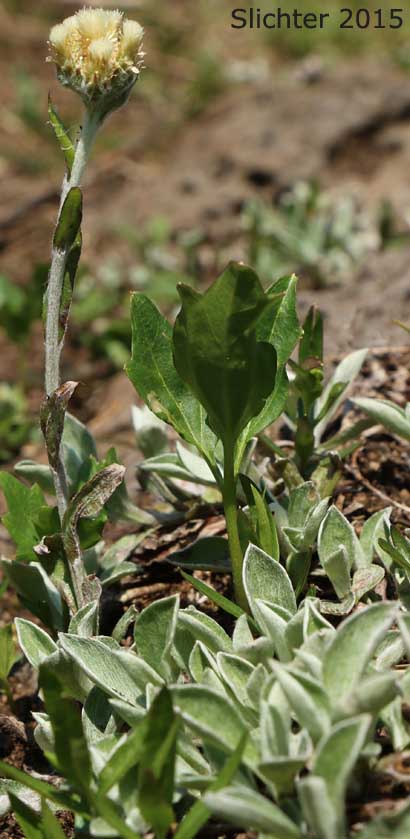 -
- 
Field pussytoes as seen atop Hardy Ridge in Beacon Rock State Park..........April 20, 2015. Note the grayish upper surface to the leaves. Similar ssp.
howellii has glabrous green leaves from the start.
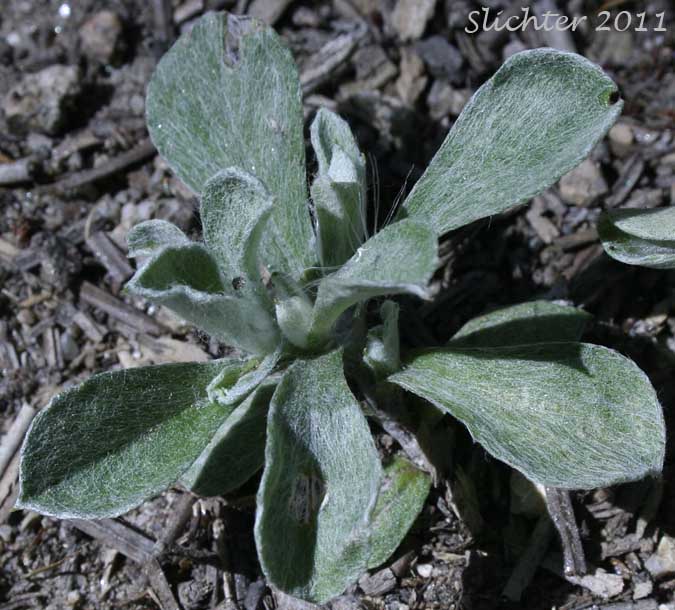 -
- 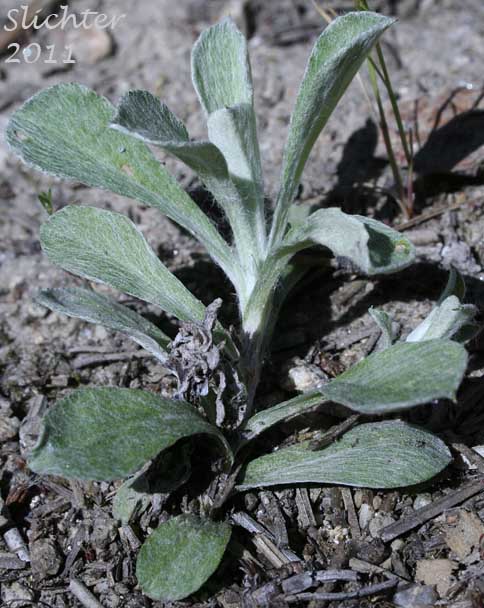
Close-ups of the basal and lower stem leaves of field pussytoes as seen along the valley trail about one-half mile uphill and northwest of the Painted Rocks trailhead, Little Spokane River Natural Area.......July 5, 2011. Note the numerous hairs on the upper surface of the leaves which give them a grayish appearance.
Paul Slichter
